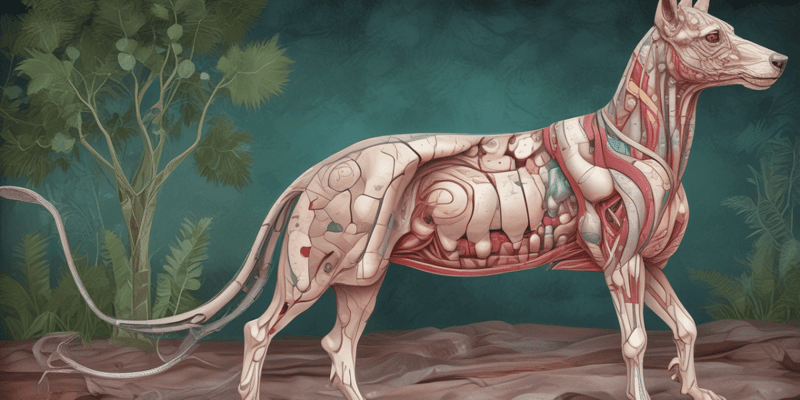Questions and Answers
What is the purpose of placing a drop of blood on the end of a slide in the blood smearing procedure?
To create the smear
Why is the spreader slide placed at an angle of about 30 degrees in front of the blood spot?
To create a feathered edge on the smear
Which solution is an anionic / acidic dye used in staining blood smears?
Solution 1
What is the ideal extent to which the smear should extend on the slide?
Signup and view all the answers
Why should the smear be allowed to fully air dry prior to staining?
Signup and view all the answers
What is the best part of a blood smear for evaluation?
Signup and view all the answers
What term is used to describe variation in erythrocyte diameter in stained blood smears?
Signup and view all the answers
What are the arrow-marked larger cells on blood smear A called?
Signup and view all the answers
What is the name for RBCs with poor hemoglobin concentration, indicated by centrally stained cells with a central pallor?
Signup and view all the answers
What does the presence of polychromatophilic erythrocytes on a blood smear indicate?
Signup and view all the answers
What term is used to describe the presence of reticulocytes in a blood smear?
Signup and view all the answers
In the context of blood smears, what does anisocytosis refer to?
Signup and view all the answers
What does the presence of polychromatophilic erythrocytes indicate in a blood smear?
Signup and view all the answers
What is the best part of a blood smear for evaluation?
Signup and view all the answers
What does microcytosis in a blood smear indicate?
Signup and view all the answers
What is the purpose of using a Diff-Quik fixative (methanol) in staining blood smears?
Signup and view all the answers
What is the function of Diff-Quik solution 1 in the staining procedure for blood smears?
Signup and view all the answers
Why is it important for the spreader slide not to be lifted until the feathered edge is completely formed in blood smearing?
Signup and view all the answers
What does it indicate if a blood smear has an uneven feathered edge and extends beyond two thirds of the length of the slide?
Signup and view all the answers
In blood smearing, what is the purpose of harvesting the blood sample using a microhaematocrit tube?
Signup and view all the answers
Study Notes
Blood Smearing Procedure
- A drop of blood is placed on the end of a slide to create a thin layer for smearing.
- The spreader slide is placed at an angle of about 30 degrees in front of the blood spot to achieve a smooth, even smearing of the blood.
Staining Blood Smears
- Eosin, an anionic/acidic dye, is used in staining blood smears.
- The smear should extend about two-thirds of the length of the slide to allow for optimal evaluation.
Preparation and Evaluation
- The smear should be allowed to fully air dry prior to staining to prevent smudging or mixing of the stain with the blood.
- The best part of a blood smear for evaluation is the "feathered edge" where the blood cells are evenly dispersed and thinly spread.
Blood Smear Characteristics
- Anisocytosis refers to variation in erythrocyte diameter in stained blood smears.
- Polychromatophilic erythrocytes indicate an increased production of red blood cells.
- Reticulocytosis refers to the presence of reticulocytes in a blood smear.
- Microcytosis indicates small red blood cell size.
- Hypochromia refers to RBCs with poor hemoglobin concentration, characterized by centrally stained cells with a central pallor.
Staining Procedure
- A fixative (methanol) is used to fix the blood cells in place before staining.
- Diff-Quik solution 1 is used to stain the blood smear, allowing for visualization of blood cell morphology.
Blood Smearing Techniques
- The spreader slide should not be lifted until the feathered edge is completely formed to prevent uneven smudging.
- An uneven feathered edge and a smear that extends beyond two-thirds of the length of the slide indicate poor smearing technique.
- Harvesting a blood sample using a microhaematocrit tube allows for a more accurate representation of blood cell morphology.
Studying That Suits You
Use AI to generate personalized quizzes and flashcards to suit your learning preferences.
Description
This quiz covers the evaluation and analysis of blood smears, including the staining process and its importance in veterinary haematology. It discusses the use of Romanowsky stains, such as Diff-Quick, for rapid staining and differentiation of smears.




